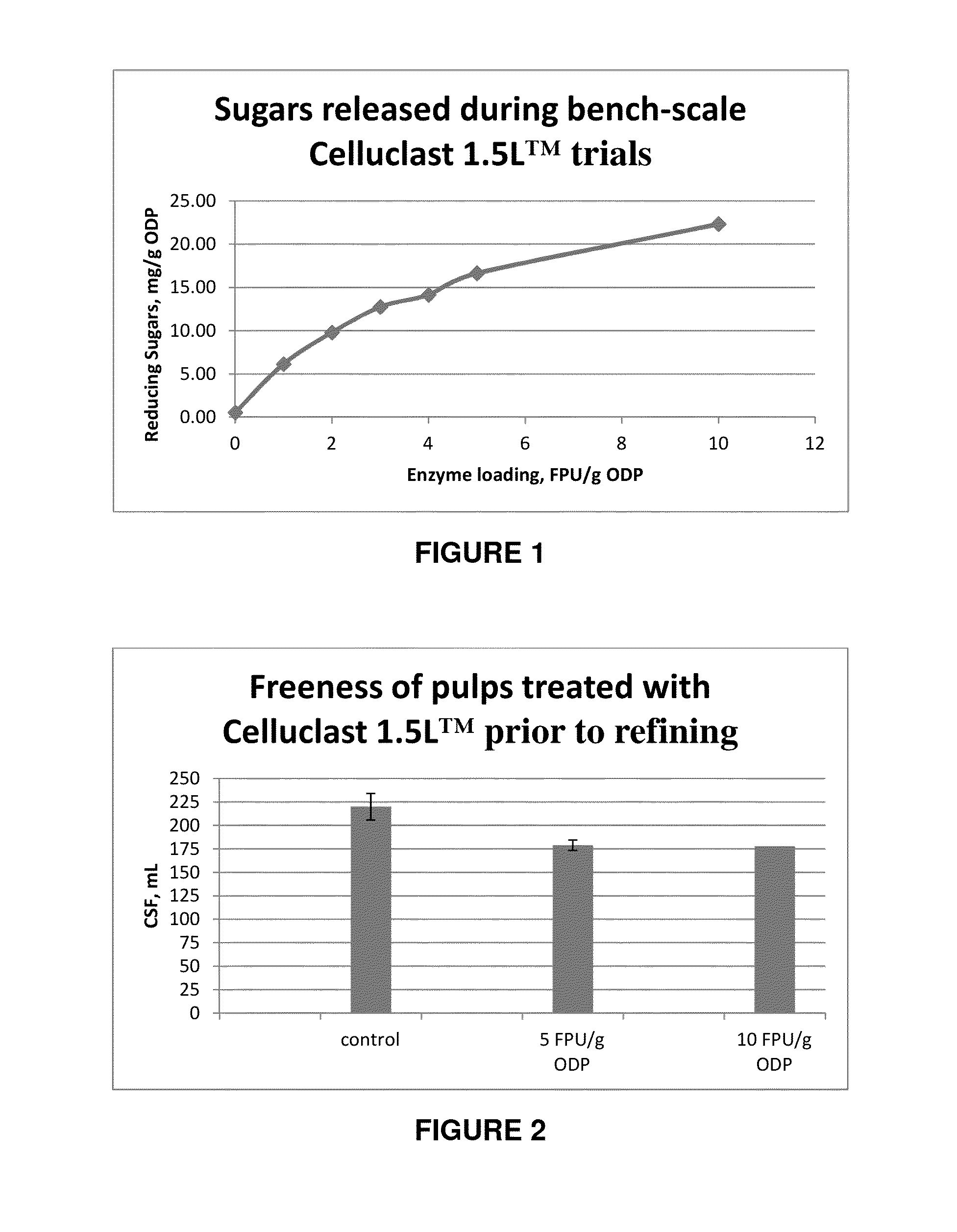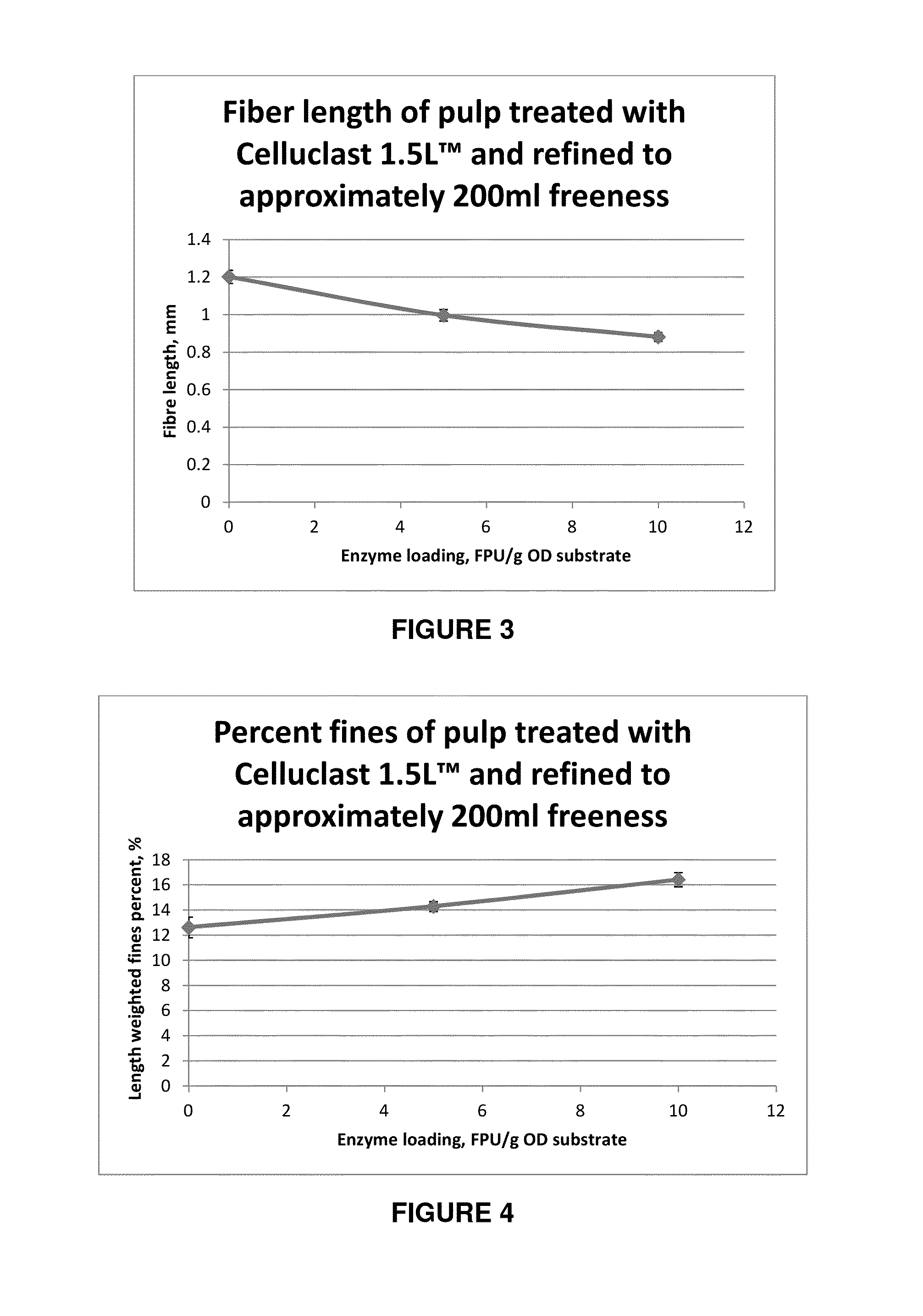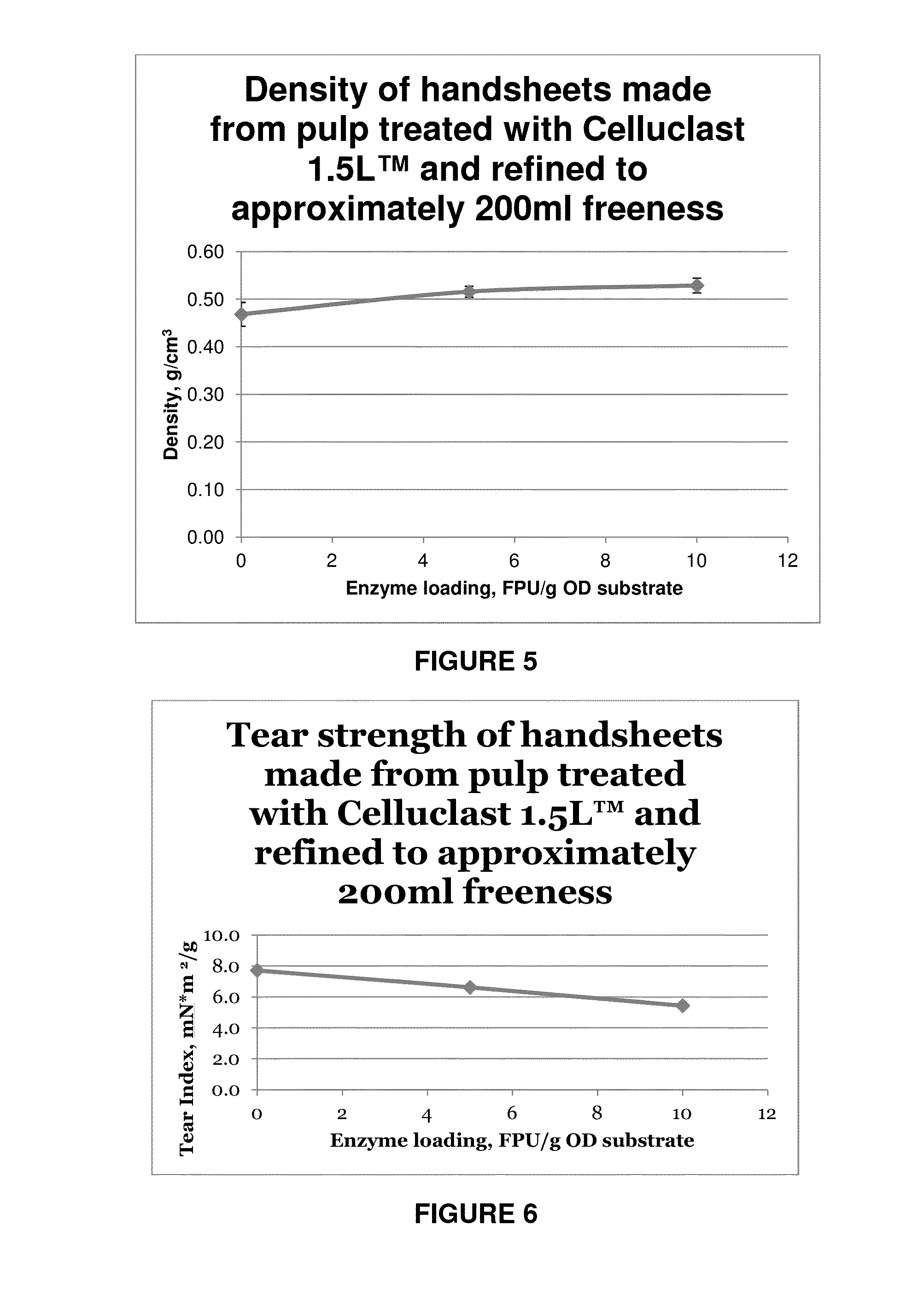Wood pulp treatment
a technology of wood pulp and treatment, applied in the field of wood pulp treatment, can solve the problems of low strength, less desirable properties of pulp, and relatively coarse surface, and achieve the effects of maintaining tensile strength, improving optical properties, and reducing energy requirements
- Summary
- Abstract
- Description
- Claims
- Application Information
AI Technical Summary
Benefits of technology
Problems solved by technology
Method used
Image
Examples
example 1
Enzymatic Activities
[0061]The commercial enzyme product, Celluclast 1.5L™, was tested for several enzymatic activities and was found to have several different types of activities. Table 1 list all relevant and significantly measurable activities and protein concentration.
[0062]Carboxymethyl cellulase (CMC) activity, equivalent to endo-β-glucanase activity, was determined following the CMC method described in Measurement of Cellulase Activities by T. K. Ghose (Pure & Appl. Chem. Vol 69, No. 2, pp. 257-268, 1987). The amount of reducing sugars released from enzymatic hydrolysis of a 2% solution of a well characterized CMC during a 30.0 minute hydrolysis at pH 4.8 and 50° C. is used to determine the enzymes EG activity. Sugar concentration is determined by the well known 3,5-dinitrosalicylic acid (DNS) solution method described by G. L. Miller (Analytical Chem., No. 31, p. 426, 1959). The addition of the DNS solution to the hydrolysis filtrate stops the reaction. The mixture was boiled...
example 2
Sugars Released
[0066]The enzyme solution was added to a TMP reject pulp (5 g ODP) using the solution's filter paper activity as a dosage indicator. Several dosages (5 and 10 FPU / g ODP), chosen based on reducing sugar results, and a control were done in duplicate and measured in duplicate for a total of four data sets. Hydrolysis was carried out at a consistency of 10%, a temperature of 50° C. and a time of 1 hour. After which, the samples were filtered and the filtrate was treated using the well known 3,5-dinitrosalicylic acid (DNS) solution method described by G. L. Miller (Analytical Chem., No. 31, p. 426, 1959). The addition of the DNS solution to the hydrolysis filtrate stops the reaction. The mixture was boiled for 5.0 minutes to allow for color formation. After cooling, the absorbency is measured at 540 nm and the concentration is determined against a standard curve. This is shown in FIG. 1 from the data in Table 2.
TABLE 2Sugars released during bench-scale Celluclast 1.5L ™ tr...
example 3
Freeness
[0067]The enzyme solution was added to a TMP reject pulp (200 g ODP) using the solution's filter paper activity as a dosage indicator. Two dosages (5 and 10 FPU / g ODP), chosen based on reducing sugar results, and a control were done in duplicate. Hydrolysis was carried out at a consistency of 4%, a temperature of 50° C. and a time of 1 hour. After this treatment, pulp was dewatered to 20% consistency and refined in a KRK refiner with a disc gap of 0.10 mm. Refined pulp was collected and moisture was checked prior to measuring Canadian Standard Freeness (CSF). Results are shown in the Table 3 and FIG. 2.
TABLE 3Freeness of pulp treated with Celluclast 1.5L ™ trialsbefore refiningEnzyme dosageStandard(FPU / g ovenAveragedeviationdried pulp)CSF (ml)(ml)Control22014(0 FPU / g ODP)51796101780
PUM
| Property | Measurement | Unit |
|---|---|---|
| Fraction | aaaaa | aaaaa |
| Fraction | aaaaa | aaaaa |
| Fraction | aaaaa | aaaaa |
Abstract
Description
Claims
Application Information
 Login to View More
Login to View More - R&D
- Intellectual Property
- Life Sciences
- Materials
- Tech Scout
- Unparalleled Data Quality
- Higher Quality Content
- 60% Fewer Hallucinations
Browse by: Latest US Patents, China's latest patents, Technical Efficacy Thesaurus, Application Domain, Technology Topic, Popular Technical Reports.
© 2025 PatSnap. All rights reserved.Legal|Privacy policy|Modern Slavery Act Transparency Statement|Sitemap|About US| Contact US: help@patsnap.com



